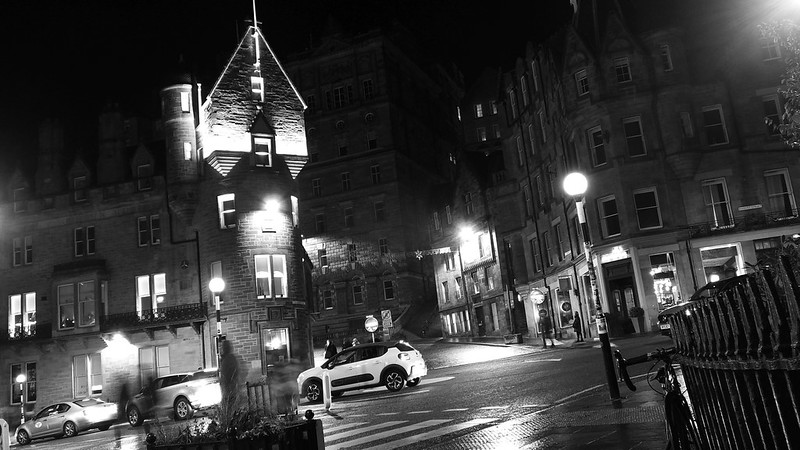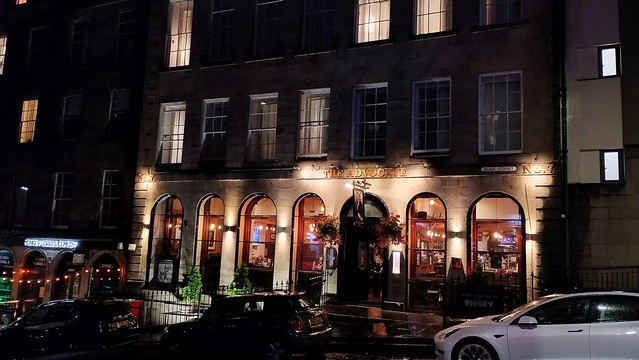Making It So: a Memoir,
Patrick Stewart,
Published Simon & Schuster

Sir Patrick Stewart recounts scenes from his remarkable life and career, a winding path that has taken him from a young Yorkshire lad in a small town, in a house with an outside loo and days where he and his mum would pretend to be out when the rent man called, to a young man trying to make his way in the world, finding through much encouragement from others who see his potential, that a career in acting is not just for the “posh” folk, but someone like him too, to being a young student actor in the Bristol Old Vic, moving around repetory theatre work, learning his craft, his dream job of being at the Royal Shakespeare Company, then slowly being drawn into film and television… And of course, to the bridge of the Starship Enterprise, not to mention leading the X-Men. And somehow still managing to keep his love of live theatre alive, still pushing himself into new works.
Despite my heavy reading load, I must confess it’s not often I pick up biographical works, but, well, come on, it’s Patrick Stewart. I think my first memory of him – although I wouldn’t really know who he was at this stage – was in the remarkable BBC production of I, Claudius, and of course I saw him appear again in films like Dune and, one of my all-time favourites, Boorman’s magnificent Excalibur, where his knight is the first to support the young Arthur (“I saw what I saw – if a boy has been chosen, a boy shall be king!”). And then there is the matter of being the skipper of a certain starship, a ship that is close to my heart and that of millions of others…
To his great credit, Patrick obviously understands that his Star Trek days cast a long shadow over his public perception, but as with his rightly-lauded stage work, he takes that (and clearly has appreciation for it and what it has given him) and uses it to not only explore Trek, but to take even those who mostly know him principally for that work, and introduce them gently to a far wider world (especially Shakespeare). Yes, of course, being an autobiography, this takes us through his life, from childhood to his eighties, and there’s a lot to love here (some of his early, childhood memories in Yorkshire put me in mind of Spike Milligan’s memoirs in places, there’s a humour underlying it that often made me smile, despite the fact some of that life was damned hard).

(two knights of the stage, Sir Ian McKellan and Sir Patrick Stewart, in their Waiting for Godot bowler hats, pic from Patrick Stewart’s Twitter)
But it’s the art and craft of acting and storytelling that are really foremost here, and Patrick’s love for acting, especially on the stage with his fellow actors and an audience, learning how to craft a character, explore the story and the emotions and motivations, how to express them, that’s what comes out most here, again and again. It runs through the entire book, from the earliest days right to the present, especially his deep love for Shakespeare, and what the Bard’s works can tell us of human nature, something he is still passionate about in his eighties (think of him doing daily online reading of Shakespeare’s sonnets during the onerous days of the Lockdown).
You can see the evolution of Patrick as a person and as an actor throughout these decades; indeed the one is often synonymous with the other – certain roles influence the actor’s state of mind (both for good and ill), while of course their personal experiences give them deeper insights into the world and humanity, which gives them new reservoirs to draw on when interpreting a character and bringing them so convincingly to life that we, the audience, believe in them. Rather wonderfully, it’s clear right to the last pages that this is still, in his eighties, a process that continues: he’s still learning, and taking those experiences to channel into his acting, which is a good thing for any artist, and not a bad thing for any person at all to retain that ability and desire.
There’s a lot of self-deprecating humour here – Patrick isn’t shy of pointing out when he made mistakes or simply didn’t know what was what. He recounts meeting Sting on the set of Dune and, being mostly a classical music fan, he had no idea who he was and thought he played in a police band for a moment (he chuckles and adds that Sting has now forgiven him). Given the sheer amount of talented people he has worked with during his long career, there are also, as you might expect, a lot of other now-famous names who crop up. Seeing a young actor whose performance he greatly admires – a young David Warner, on stage, then relating about getting to work with David much later (especially the powerful Chain of Command two-parter in TNG, where David played the Cardassian torturing Picard, most of the scenes just these two actors playing off each other’s strengths). Or the time he was working in theatre in the mid 1960s with a young Jane Asher, when her then-boyfriend Paul McCartney arrives to pick her up in his new Aston Martin, says hello to Patrick and explains Jane has told him he like cars, so here are the keys, grab your girlfriend, we’re going for a ride and you’re driving.
Naturally the chapters on making Star Trek are, to coin an old Vulcan phrase, “fascinating”. Patrick explains how unused he was to episodic television and the tight rush filming each episode required, how as the older actor in the cast he felt he had to set an example and tell his colleagues off for too much larking around on set, with them responding yes, they should dial it down a bit, but he in turn needed to lighten up (and he comes to realise yes, he should, much as Picard did too in later seasons). He also recounts how Roddenberry didn’t seem too keen on him at all, a cause for much regret because he admired what Roddenberry had created. How most of them thought the show would be a “one and done”, i.e. cancelled after one season, because nobody could recreate the lightning in a bottle that made the original Trek so beloved by generations, and how he wasn’t too worried about that because he would return to theatre.

(Sir Patrick Stewart in his role as Captain Jean-Luc Picard in Star Trek: the Next Generation, (c) Paramount)
As we all know, that was not how The Next Generation turned out, and as it continued and grew, so too did Patrick, not just as an actor inhabiting and evolving his character, but in his own life. His colleagues become a family, and some of them introduce him to the world of conventions, something that seems very peculiar to him at first, and now he’s come to enjoy them because he sees the faces of those fans and talks to some, and realises how much of an impact the show has had on so many of our lives, often inspiring us when we are at our lowest or darkest hours, and that to be a part of that is something to be treasured. I found the chapters where he discussed going back to that role for the recent Picard series especially fascinating – this was a character he had enjoyed but thought well over, reluctant to return to him, until the producers and writers explained how they wanted to explore Jean-Luc as the age Patrick himself is now, how that changed the man.
While there are many ups and downs, as in any life (loss of loved ones, marriages drifting apart, lost opportunities and regrets), the overall tone here is positive; this feels like it is written by a man who has looked back on all those experiences and realised that actually, he is fortunate and in a situation now, at this stage of his life, where he is more comfortable with himself, and realises his good fortune and appreciates it, both in his professional life, and in his personal life (not least with his wife Sunny, where his love for her and how she changed his life shines through). I was left with a big smile on my face as I read much of this, especially the final chapters. It’s an absolute delight of a memoir.















































